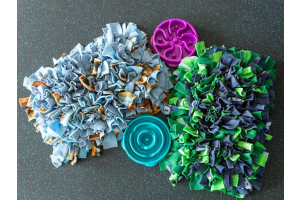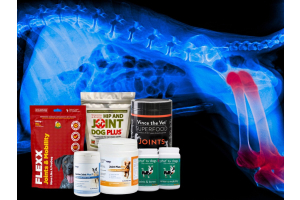Page 2 - Seasonal Itching
- - February 01, 2023
Are you thinking of purchasing the Adored Beast Yeasty Beast Protocol? If you are, have a read of this blog to see if this kit may be suitable.
The Adored Beast Yeasty Beast Protocol has been developed to help get rid of yeast. It’s a safe and effective program of gentle herbs and homeopathic remedies. The Kit has been designed to help get rid of yeast without dangerous yeast die-off - there is more on this further down.
What is in the Yeasty Beast Protocol?
The kit comprises of three supplements:
Liver Support Spray: to support a strong liver and to help regenerate healthy liver cells and supports the organ’s ability to filter toxins from the blood. The liver regulates histamine which is associated with allergies, protein synthesis and biochemical production for digestion
Yeasty Beast 1 Spray: A homeopathic combination of Sulphur, Berberis, Nux Vomica, Echinacea, and Graphites prepared in a 13% alcohol base. This combination is specifically designed to target the skin. Yeasty Beast I
- - March 02, 2021
Hints and Tips for Itchy Skin - Richard Allport
As the weather warms up and summer is approaching, every veterinary practice will soon be seeing increasing numbers of dogs and cats with itchy skin. This is partly because fleas and other parasites begin to abound but also because skin allergic reactions become more intense.
Some of the most common allergies, especially in dogs, are to grass and tree pollens. Whilst these can cause symptoms similar to hay fever, more often in dogs the allergic reaction is most obvious in the skin. This often causes not just itchy skin, but hot, red, itchy ears; itchy feet which are constantly nibbled and chewed; and itchy nose, face and 'rear end' – base of tail and under the tail. Because the ears and area below the tail are particularly sensitive, these are often the most itchy areas, so dogs are sometimes described as having 'ears and rear syndrome' and so many hapless dogs are brought into the veterinary consulting room shaking their ears, chewing
- - March 02, 2021
Does your pet suffer from:- recurrent ear problems, inflamed, smelly feet, an itchy bottom, anal sac irritations or thrush in the mouth, nose, gut or genital tract? Tried all sorts of potions, lotions, creams, powders and sprays but still having problems? Yeasts are likely to be involved.
Overgrowth
Yeasts are micro-organisms often found on the skin and in the bowels of dogs and cats. Under normal circumstances, they form part of a living layer of microorganisms (otherwise know as the 'microbiome') which coats the surface of the skin and the lining of the gut, lungs, nasal chambers and genital tract.
When this biological barrier is healthy and the bacteria, yeasts, fungi and other organisms that comprise it are in balance, it is an important defence mechanism which helps to protect the body against harmful, foreign invaders.
If however, the microbiome is damaged or disrupted in some way (by a drug, for example) the yeasts present can multiply out of control and irritate, inflame and
- - March 01, 2021
If your Dog is prone to skin problems what might help? This week’s blog was written in response to a customer’s question regarding her pug Alfie (pictured), who is prone to skin problems.Skin problems are an increasing problem for our pets, especially for those animals like pugs, which have a lot of skin creases around their faces. Skin folds create a favourable environment for bacterial growth, leading to irritation, inflammation and a foul odour between the folds. Skin problems can be related to your pet’s internal health and immune system.
Whilst a dog’s body will detoxify harmful waste products (from day-to-day environmental pollutants, poor quality food or the chemical products which are applied to the skin) through the liver, kidneys, the gut and the skin, once the liver and kidneys become overburdened, the body will attempt to detoxify through the skin, hence skin and coat problems including allergies which can emerge.
So here are a few suggestions to consider……
Nutrition and
- - September 30, 2020
Do you use a quality omega-3 fish oil for dogs and cats?…could this be the missing ingredient to support your pet’s optimum health?
Omega-3’s cannot be produced by the body, so cats and dogs must obtain them through diet or supplementation. Fish and its oils can support the health of your pet’s skin & coat, immune system, kidneys, heart, eyes, joints and many more.
Omega-3 fatty acids can originate from both plant-based and marine sources as follows:
- ALA, a short-chain, plant based omega-3 is found in seeds such as flaxseeds and nuts
- EPA and DHA are long chain omega fatty acids found abundantly in fish.
Omega-3 fatty acids are considered essential fatty acids (EFAs) as they cannot be readily produced by the body. EPA and DHA from fish oil and other marine sources are a better source of omega-3’s for pets than plant based ALA because an enzyme is required to convert ALA to EPA and DHA in the body. Both humans and dogs have a limited ability to convert ALA to EPA and DHA, with cats





